Galaxies Found Close Together Show Signs Of Impending Doom

The ‘compact galaxy groups’ of the Universe won’t be around for long!
“They most likely form as subsystems within looser associations and evolve by gravitational processes. Strong galaxy interactions result and merging is expected to lead to the ultimate demise of the group. Compact groups are surprisingly numerous, and may play a significant role in galaxy evolution.”
–Paul Hickson
They might call it “empty space” because of the great distances between the stars and galaxies, but the reality is that space is filled with billions of them.
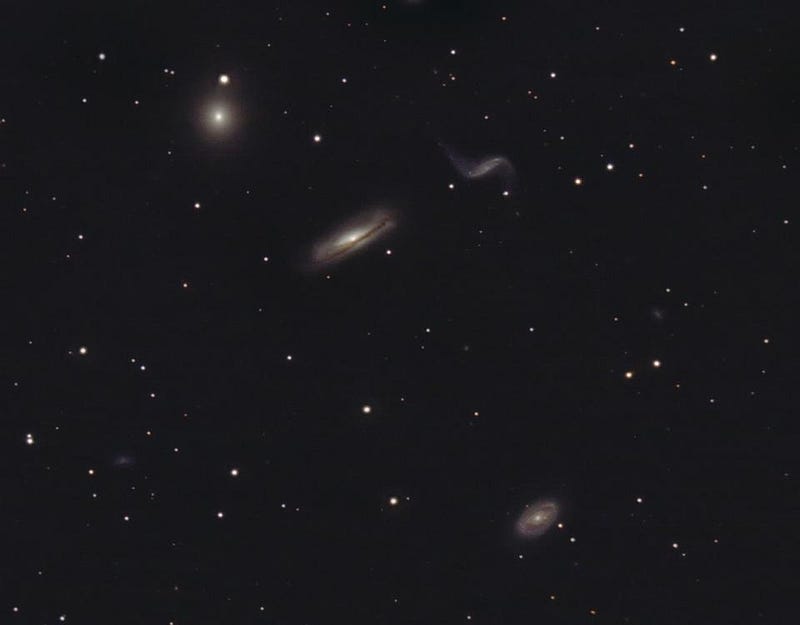
Most often, there are millions of light years separating the galaxies from one another, with galaxy mergers and collisions a rare occurrence.
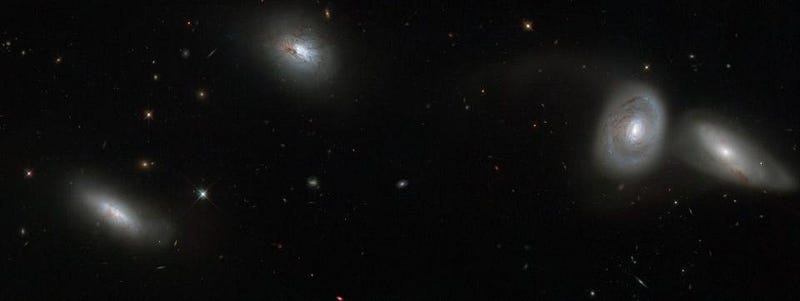
But there are a slew of galaxies that are found tightly grouped together, with three or more found unusually close together.
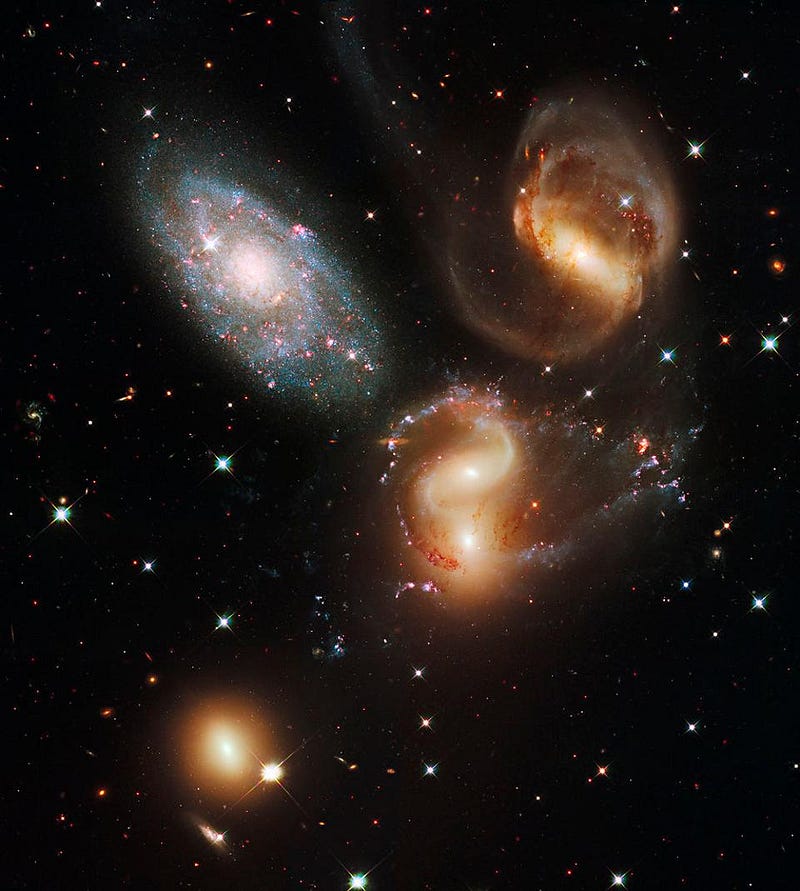
Known as compact groups, these collections are surprisingly numerous, and were first catalogued explicitly by astronomer Paul Hickson in 1982.
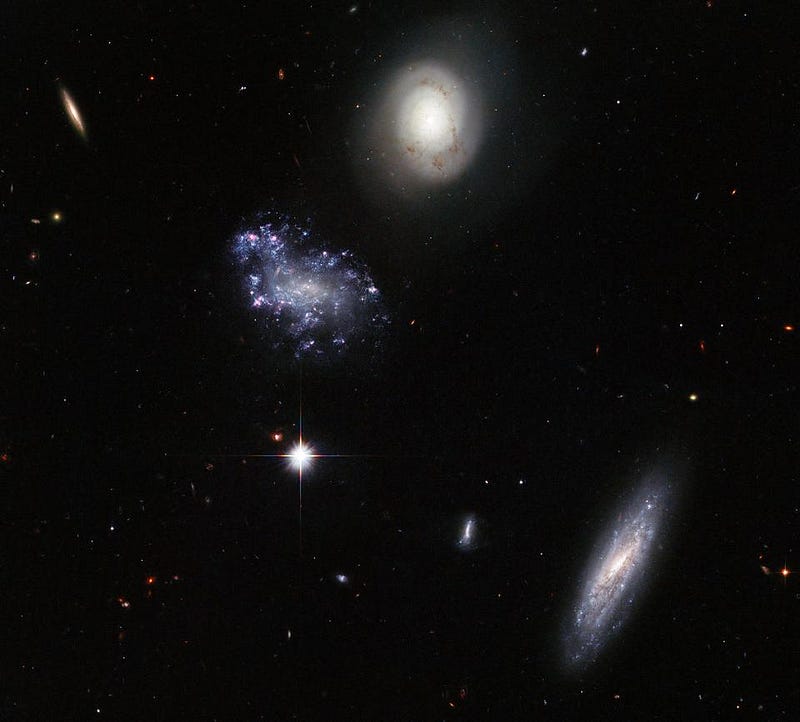
A combination of spirals and ellipticals, many galaxies within these groups contain irregular shapes and unusually high rates of electromagnetic emissions.
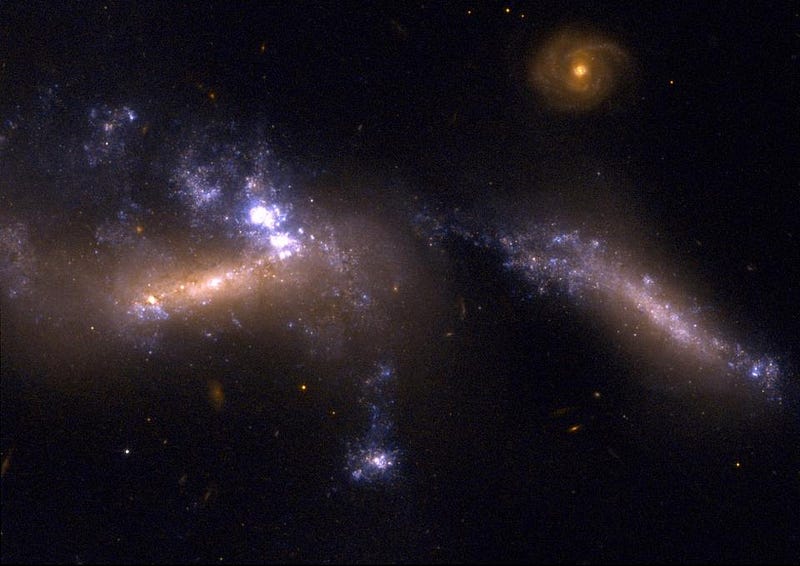
This is due to gravitational interactions between gas within the galaxies, which triggers star formation, infrared and radio emission and can even turn on a central black hole.
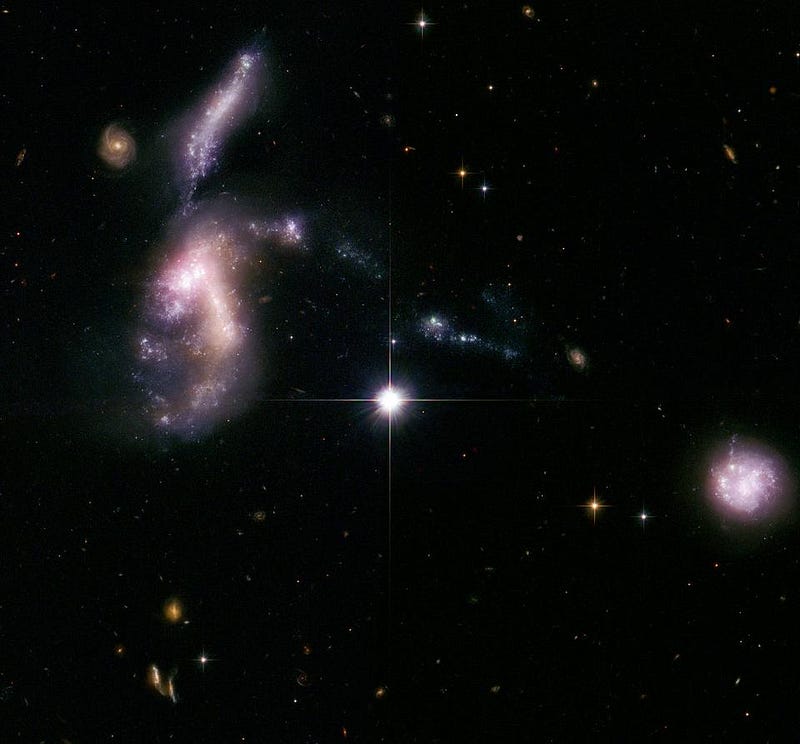
From a dynamical perspective, their motions are dominated by dark matter, both within the individual galaxies and throughout the group.
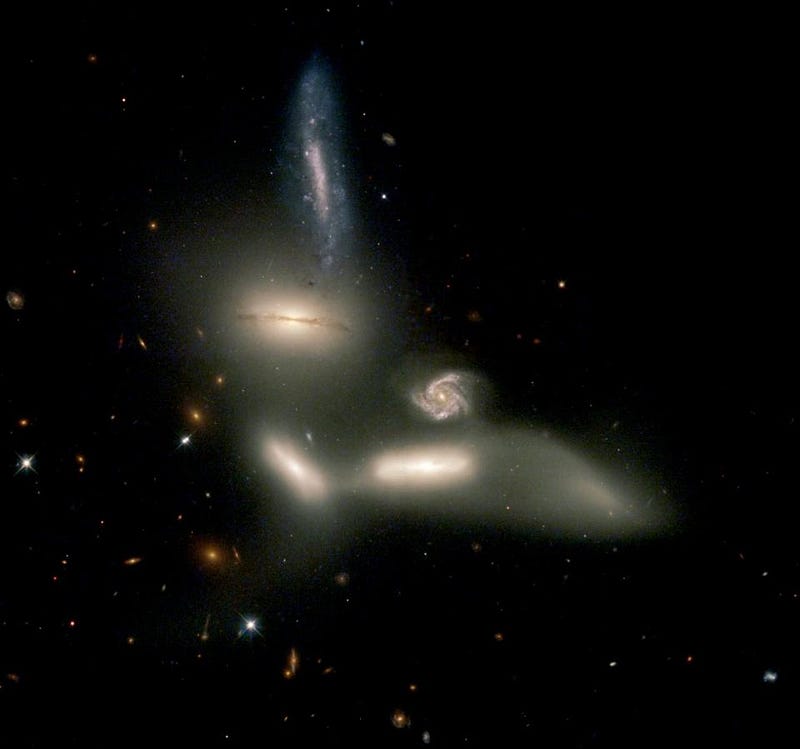
Nearby compact groups are plentiful, and are short-lived phases where gravitation will lead them to merge into a single galaxy.
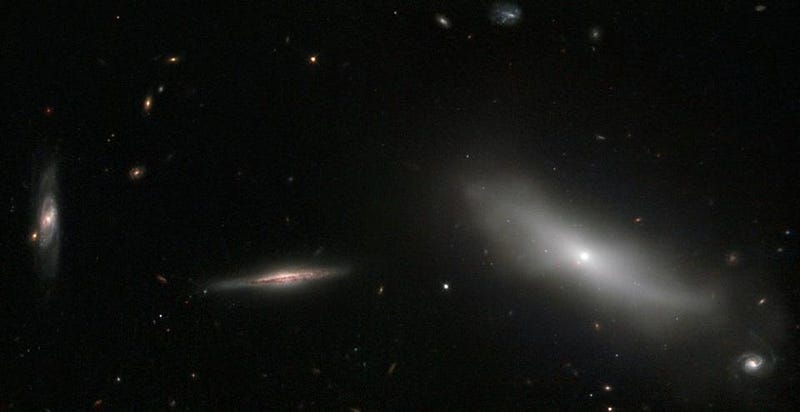
Only the groups with random non-gravitational alignments will survive for long.
Mostly Mute Monday tells the story of a single astronomical phenomenon or object in visuals, images and video in no more than 200 words.
This post first appeared at Forbes, and is brought to you ad-free by our Patreon supporters. Comment on our forum, & buy our first book: Beyond The Galaxy!





